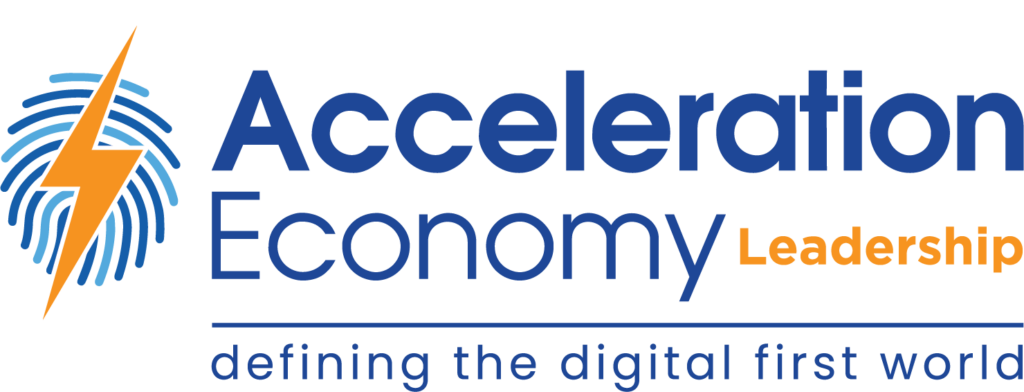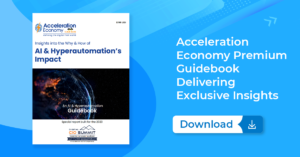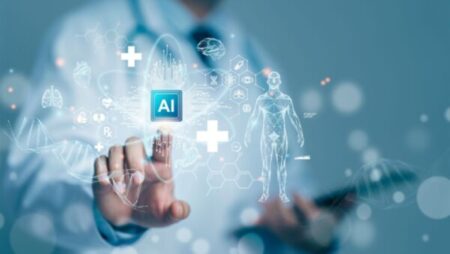As the CIO of a manufacturing company, I have always believed that the most valuable service that my team and I can provide is equipping our organization with tools that enable better, faster decision-making.
Recently, generative AI has emerged as a powerful tool with the potential to revolutionize decision-making processes. The rapid advancements in technology have provided unprecedented benefits and opportunities, but how did we arrive at this point, and where are we headed?
In the early stages of my career, data was typically presented to decision-makers through printed reports. Over time, the delivery method evolved from physical printouts to emails containing spreadsheets and, eventually, formatted PDFs. As this evolution played out, IT departments focused on building and maintaining the systems that generated these reports, as well as constantly updating their content and format.
This reality did not resemble the futuristic vision portrayed in science fiction books, television shows, and movies of the 1950s and 1960s. At that time, it was widely believed that machines would eventually be capable of processing vast amounts of data and quickly generating creative solutions to any problem. However, until recently, this vision remained elusive.
Just a few years ago, intelligent machines seemed as far-fetched as flying cars, floating buildings, or weekend trips to the moon — remaining within the realm of science fiction. Despite the introduction of self-service business intelligence (BI) tools, which significantly improved the outdated process of requesting IT-built reports for every query, the capabilities of these machines appeared limited and far from displaying true “intelligence.”
Two key developments have brought the dream of intelligent machines closer to reality: cloud computing and generative AI.
To hear practitioner and platform insights on how solutions such as ChatGPT will impact the future of work, customer experience, data strategy, and cybersecurity, make sure to register for your on-demand pass to Acceleration Economy’s Generative AI Digital Summit.
Cloud Computing
Access to massive computing power is essential for building models that exhibit intelligent behavior. Traditionally, supercomputers were the solution, but their use was limited to large organizations, governments, and universities.
The advent of cloud computing changed the landscape by offering scalable, virtual processing power similar to that of supercomputers. This development allowed companies of all sizes and even individuals to build data models with remarkable capabilities at lower cost and with easier access.
The application of AI in business has evolved rapidly alongside advances in data science. Early AI applications, powered by data-driven insights, focused on automation, optimization, and simple, predictive analytics. However, limitations in data processing and analysis hindered their widespread adoption.
Generative AI
The most recent, and even bigger, game changer has been generative AI. This subset of AI focuses on algorithms that generate new data or information based on existing data sets. Data science plays a critical role in generative AI by providing the essential information, perspectives, data, and insights required to train these algorithms, as well as extract business takeaways. Generative AI has unlocked a world of possibilities by allowing businesses to leverage AI-generated insights and ideas for faster, more informed decision-making.
Models like GPT-4, developed by OpenAI, have demonstrated the power of generative AI, enabling human-like text generation and natural language understanding. This has given rise to numerous applications, from chatbots and virtual assistants to advanced data analysis.

Which companies are the most important vendors in AI and hyperautomation? Check out the Acceleration Economy AI/Hyperautomation Top 10 Shortlist.
Operationalizing Generative AI for CIOs
The prospect of integrating generative AI within my organization opens the door to highly transformative results. By incorporating AI-generated insights into decision-making processes and workflows, teams throughout the company will be able to make more informed decisions at a faster pace. Additionally, generative AI can help automate tasks that previously required significant human input, freeing up resources for more strategic and creative endeavors.
Generative AI can optimize supply chain management by predicting demand patterns, identifying bottlenecks, and suggesting efficiency improvements. It can also be utilized for predictive maintenance, using machine-generated insights to identify potential equipment failures and proactively minimize downtime. Even within my IT team, it shows great promise for significantly reducing the time it typically takes to build applications.
Operationalizing generative AI requires a strategic approach to data management, with data science acting as the backbone of the process. Challenges, such as data quality, scalability, and security, must be addressed to ensure successful AI deployment.
Game-Changing Implications for CIOs
Generative AI transforms the role of the CIO, making them a central figure in driving innovation, strategy, and decision-making within organizations. As AI technology becomes more advanced, CIOs must adapt by:
- Developing a deep understanding of generative AI’s capabilities and limitations
- Aligning generative AI initiatives with overall business goals and objectives
- Encouraging collaboration between IT and other departments to maximize the potential of AI
- Staying informed of the latest advancements in AI technology and best practices
- Actively advocating for AI-driven innovation within the organization
- Ensuring that these technologies are used ethically and sustainably.
Embracing the World of Possibilities
The astounding progress in cloud computing and generative AI has propelled the once far-fetched concept of intelligent machines from the pages of science fiction novels to the heart of modern business operations. As we continue to explore the vast potential of this technology, it is crucial to not only embrace it but also integrate it into your organization’s strategy. Doing so can lead to significant enhancements in decision-making, efficiency, and overall competitiveness.
It’s paramount that CIOs stay informed about these advancements and be ready to weave AI solutions into their organization’s fabric. I am most excited about the potential to deliver to my organization powerful tools that can effortlessly tackle requests, or what are increasingly being called “prompts,” such as:
- Prepare a PowerPoint slide using the board template that displays quarterly EBITDA growth over the past two years, and projected growth for the rest of this year.
- Create an Excel spreadsheet with all market prices that are more than 5% below target for customer X and email it to the pricing distribution list.
Final Thoughts
In conclusion, I encourage you to stay open-minded about the possibilities around this technology. ChatGPT, with its well-known limitations, is only a glimpse of what is in store. I believe that the integration of generative AI with other data science platforms will fundamentally change the focus of my job as a CIO over the next few years, and I’m poised to dive right in.
Want more tech insights for the top execs? Visit the Leadership channel:











